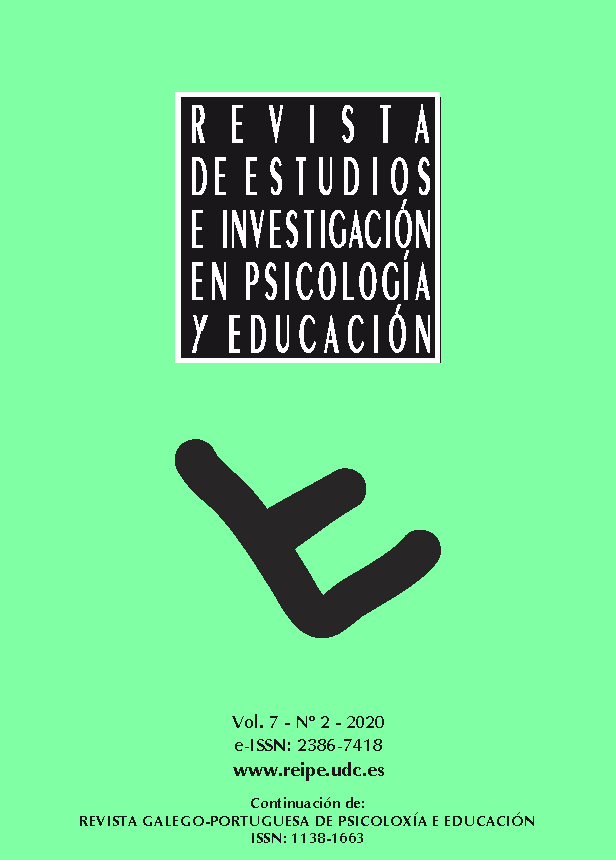Theory of gamified didactic situations: a detailed outline in teaching the Padovan sequence
Main Article Content
Abstract
The aim of this study is to create a systematisation of knowledge for the possible application of gamification in the teaching of Mathematics, based on the Theory of Didactical Situations (TDS) as a teaching methodology. The preliminary and a priori analysis phases of Didactical Engineering (DE) are used as the basis for the research methodology, taking as a case study the teaching to students at undergraduate level of the extension of the Padovan sequence to a non-positive whole index. The main objective of the research is not, therefore, to analyse the data of the application itself, but to identify the theoretical/scientific knowledge elements that require systematisation and accumulation, in order to formulate a didactic and methodological proposal for the teaching of mathematics that combines gamification strategies, TDS and DE.
Keywords:
Downloads
Article Details
References
Almouloud, S. A. (2007). Fundamentos da didática da matemática. Curitiba: Editora UFPR.
Almouloud, S. A., & Silva, M. J. F. (2012). Engenharia didática: evolução e diversidade Didactic engineering: evolution and diversity. Revemat: Revista Eletrônica de Educação Matemática, 7(2), 22-52. https://doi.org/10.5007/1981-1322.2012v7n2p22
Alves, F. (2015). Gamification: como criar experiências de aprendizagem engajadoras. São Paulo: DVS editora.
Alves, F. R. V., & Borges Neto, H. (2011). A existência da Sequência de Fibonacci no campo dos Inteiros: uma atividade de investigação apoiada nos pressupostos da Sequência Fedathi. Boletim GEPEM, (59), 135-140. http://costalima.ufrrj.br/index.php/gepem/article/view/81/268
Artigue, M. (1995). Ingeniería didáctica. In M. Artigue, R. Douady, L. Moreno, & P. Gómez (Ed.), Ingeniería didáctica en educación matemática: un esquema para la investigación y la innovación en la enseñanza y el aprendizaje de las matemáticas (pp. 33-59). México: Iberoamérica. https://core.ac.uk/reader/12341268
Brousseau, G. (1986). Fondements et méthodes de la didactique des mathématiques. Recherches en Didactique des Mathématiques, 7(2), 33–115. https://revue-rdm.com/1986/fondements-et-methodes-de-la/
Chou, Y. (2015). Actionable gamification: beyond points, badges and leaderboards. Fremont: Octalysis Media.
Csikszentmihalyi, M. (1999). A descoberta do fluxo: a psicologia do envolvimento com a vida cotidiana. Rio de Janeiro: Rocco.
Costa, D. F. da, Monteiro, J. A., Castro, J. B. de, Coutinho Júnior, A. de L., & Sales, G. L. (2019). Strategies for the elaboration of a gamed activity script. Research, Society and Development, 8(11), e188111451. https://doi.org/10.33448/rsd-v8i11.1451
Ferreira, R. de C. (2015). Números mórficos [Dissertação de Mestrado não publicada]. Universidade Federal da Paraíba, Brasil. https://repositorio.ufpb.br/jspui/handle/tede/8040
Kapp, K. M. (2012). Games, gamification, and the quest for learner engagement. T+ D, 66(6), 64-68. https://www.td.org/magazines/td-magazine/games-gamification-and-the-quest-for-learner-engagement
Leal, E. A., Miranda, G. J., & Carmo, C. R. S. (2013). Teoria da autodeterminação: uma análise da motivação dos estudantes do curso de ciências contábeis. Revista Contabilidade & Finanças, 24(62), 162-173. https://doi.org/10.1590/S1519-70772013000200007
McGonigal, J. (2017). A realidade em jogo. Rio de Janeiro: Editora Best Seller.
Pais, L. C. (2015). Didática da Matemática: uma análise da influência francesa. Belo Horizonte: Autêntica.
Ramos, V P. P., & Marques, J. J. P. (2017). Dos jogos educativos à gamificação. Revista de Estudios e Investigación en Psicología y Educación, Extr.(01), 319-323. https://doi.org/10.17979/reipe.2017.0.01.3005
Ribeiro Jr., P., Munhoz, R., Comiotto, T., & Oliveira, L. (2017). Do jogo ao game: considerações teóricas e articulações entre game e aprendizagem. Revista de Estudios e Investigación en Psicología y Educación, Extr.(13). https://doi.org/10.17979/reipe.2017.0.13.2301
Seenukul, P. (2015). Matrices which have similar properties to Padovan-Matrix and its generalized relations. SNRU Journal of Science and Technology, 7(2), 90-94. https://ph01.tci-thaijo.org/index.php/snru_journal/article/view/43656
Silva, J. B., Sales, G. L., & Castro, J. B. (2019). Gamificação como estratégia de aprendizagem ativa no ensino de Física. Revista Brasileira de Ensino de Física, 41(4). https://doi.org/10.1590/1806-9126-rbef-2018-0309
Silva, J. B., & Sales, G. L. (2017). Gamificação aplicada no ensino de Física: um estudo de caso no ensino de óptica geométrica. Acta Scientiae, 19(5). http://www.periodicos.ulbra.br/index.php/acta/article/view/3174
Silva, J. B., & Sales, G. L. (2018). Um panorama da pesquisa nacional sobre gamificação no ensino de Física. Tecnia, 2(1). http://revistas.ifg.edu.br/tecnia/article/view/172
Sokhuma, K. (2013). Padovan q-matrix and the generalized relations. Applied Mathematical Sciences, 7(56), 2777-2780. https://doi.org/10.12988/ams.2013.13247
Spinadel, V. W., & Buitrago, A. R. (2009). Towards van der Laan’s Plastic Number in the Plane. Journal for Geometry and Graphics, 13(2), 163-175. http://www.heldermann-verlag.de/jgg/jgg13/j13h2spin.pdf
Stewart, I. (1996). Tales of a neglected number. Scientific American, 274(6), 102-103. https://www.jstor.org/stable/24989576
Vieira, R. P. M., & Alves, F. R. V. (2019). A Sequência de Padovan e o número plástico: uma análise prévia e a priori. Research, Society and Development, 8(8), e26881212. https://doi.org/10.33448/rsd-v8i8.1212
Voet, C., & Schoonjans, Y. (2012). Benedictine thought as a catalyst for 20st Century liturgical space. Proceedings of the Second International Conference of the European Architectural History Network (pp. 255-261). https://limo.libis.be/primo-explore/fulldisplay?docid=LIRIAS1683918&context=L&vid=Lirias&search_scope=Lirias&tab=default_tab&lang=en_US



